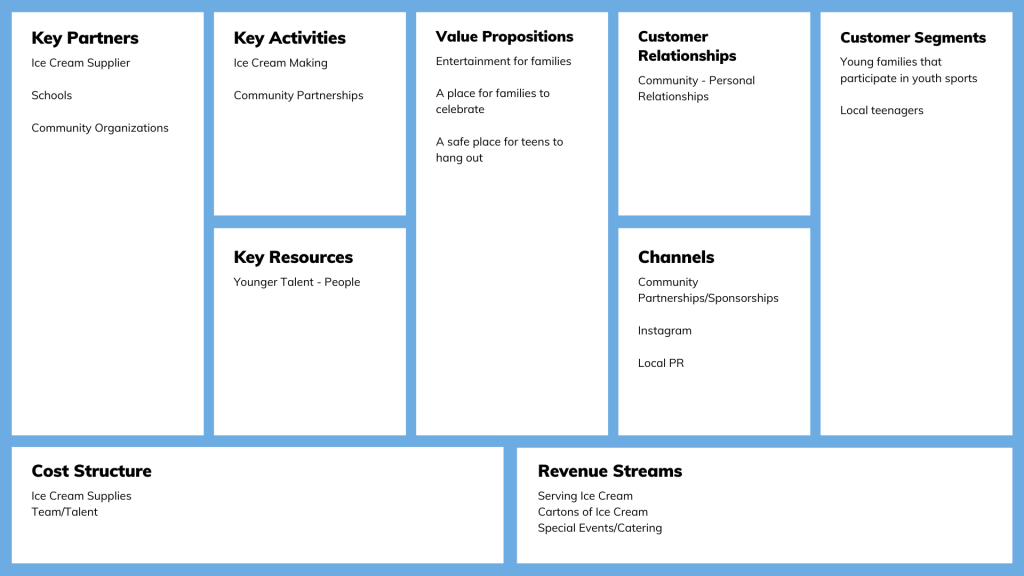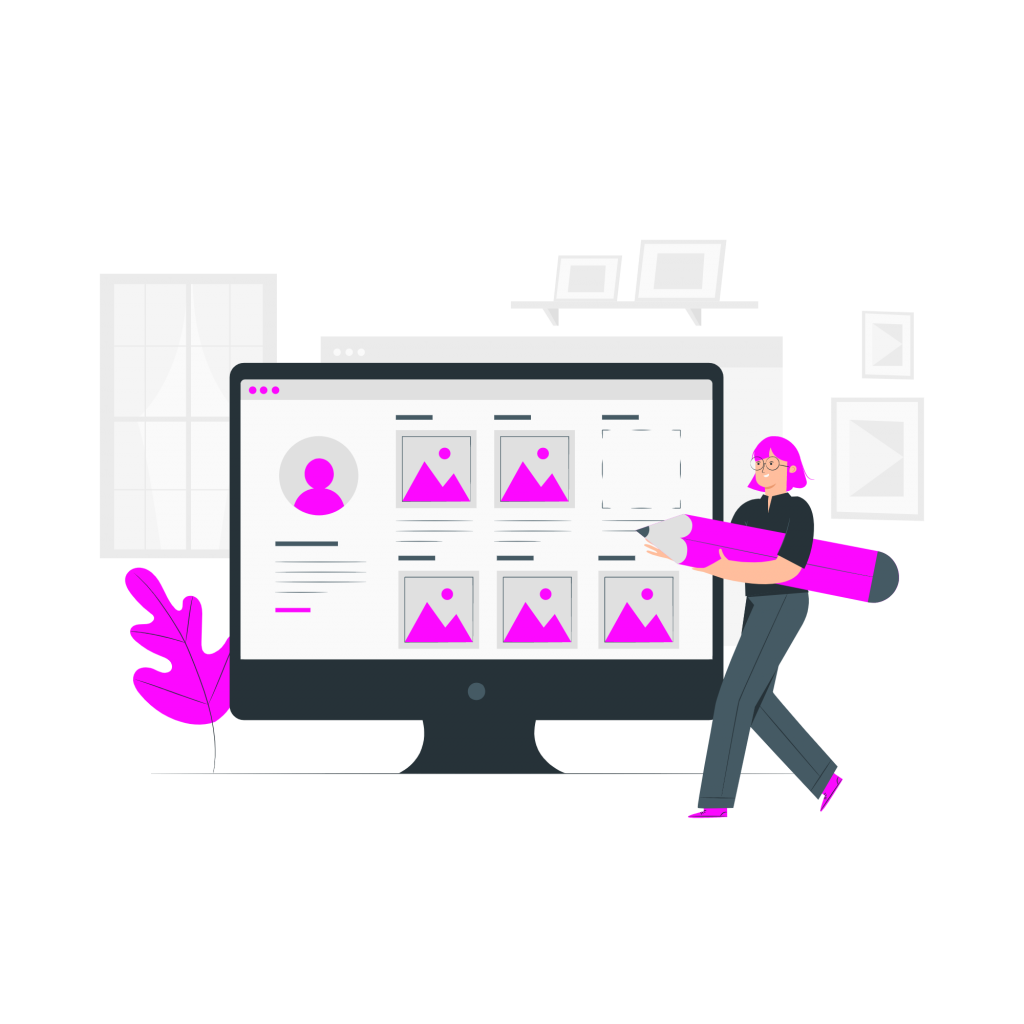The Business Model Canvas is a strategic management and entrepreneurial tool used to visualize and plan the key elements of a business. It’s a simple, yet powerful tool that helps entrepreneurs and business owners quickly and easily define their business strategy and identify potential challenges. In this blog post, we’ll take a look at some examples of how the Business Model Canvas can be used to help you visualize and plan your business.
What is the Business Model Canvas?
The Business Model Canvas is a visual representation of the key elements of a business. It’s a tool that helps you understand the different components of your business and how they all fit together. The canvas consists of nine blocks that represent the different elements of a business:

Example: Business Model Canvas Example for Ice Cream
- Value Proposition: This block represents the unique value that your business offers to its customers. It’s the reason why customers choose your product or service over others.
- Customer Segments: This block represents the different groups of customers that your business targets.
- Channels: This block represents the different ways that you reach and communicate with your customers.
- Customer Relationships: This block represents the different types of relationships you have with your customers.
- Revenue Streams: This block represents the different ways that your business generates revenue.
- Key Partners: This block represents the key suppliers, distributors, and other partners that your business works with.
- Key Activities: This block represents the key activities that your business must perform in order to deliver value to your customers.
- Key Resources: This block represents the physical, financial, and human resources that your business needs to operate.
- Cost Structure: This block represents the different costs that your business incurs in order to operate and deliver value to your customers.
Business Model Canvas Examples
Now that we’ve covered the basics of the Business Model Canvas, let’s take a look at some examples of how it can be used in different types of businesses.
Example 1: E-Commerce Business
For an e-commerce business, the Business Model Canvas might look something like this:
Value Proposition: Offer a wide selection of high-quality products at competitive prices with fast and reliable shipping.
Customer Segments: Online shoppers looking for a convenient and hassle-free shopping experience.
Channels: Website, mobile app, social media, email marketing.
Customer Relationships: Personalized product recommendations, loyalty programs, and customer support.
Revenue Streams: Sales of products, and subscription fees for premium services.
Key Partners: Suppliers, fulfillment centers, payment processors.
Key Activities: Marketing, customer service, order fulfillment, logistics.
Key Resources: Website, inventory, employees, marketing budget.
Cost Structure: Advertising, employee salaries, fulfillment and shipping costs, credit card processing fees.
Example 2: Software as a Service (SaaS) Business
For a SaaS business, the Business Model Canvas might look something like this:
Value Proposition: Offer a powerful and easy-to-use software solution that helps businesses improve their productivity and efficiency.
Customer Segments: Small and medium-sized businesses looking for a cost-effective and scalable solution.
Channels: Website, online marketing, sales team, word-of-mouth.
Customer Relationships: Free trial, onboarding and training, customer support, regular updates and upgrades.
Revenue Streams: Subscription fees, upgrades and add-ons.
Key Partners: Cloud hosting providers, integrators and consultants.
Key Activities: Software development, customer support, sales and marketing.
Key Resources: Software development team, sales and marketing team, customer support team.
Cost Structure: Employee salaries, marketing and advertising costs, hosting and infrastructure costs.
Example 3: Service-Based Business
For a service-based business, the Business Model Canvas might look something like this:
Value Proposition: Offer high-quality and personalized services that meet the specific needs of our clients.
Customer Segments: Businesses and individuals in need of our services.
Channels: Website, social media, referrals, networking events.
Customer Relationships: Consultations, ongoing support and communication, regular check-ins.
Revenue Streams: Hourly or project-based fees for services rendered.
Key Partners: Other service providers, suppliers, industry experts.
Key Activities: Client consultations, service delivery, account management.
Key Resources: Service team, equipment and supplies, client management software.
Cost Structure: Employee salaries, equipment and supply costs, marketing and advertising expenses.
Conclusion
The Business Model Canvas is a valuable tool for entrepreneurs and business owners looking to define and plan their business strategy. By visualizing the key elements of your business, you can quickly identify potential challenges and opportunities, and develop a roadmap for success. By using the examples above as a guide, you can create your own Business Model Canvas to help you plan and grow your business.
If you’re ready to take your startup to the next level and need help with the fundraising process, don’t hesitate to book a meeting with our experienced team. We have a proven track record of helping startups secure the funding they need to succeed. Simply click here to book a meeting and let us help you navigate the complex world of startup fundraising.






